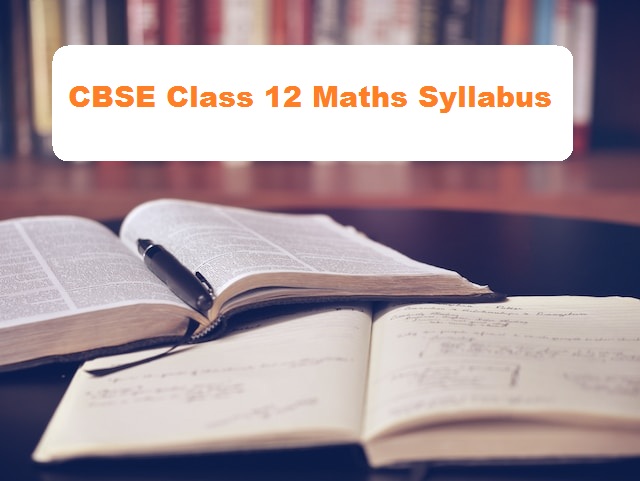CBSE Class 8 Science Syllabus 2024-25

The Central Board of Secondary Education (CBSE) has designed CBSE Class 8 Science syllabus 2024 to make the students aware of the basic concepts of science. The details about these concepts are studied in higher classes.
Students who are preparing for their class 8th mid-term or annual exam should be well aware of the syllabus to score good marks.
The 8th class science curriculum of CBSE is quite vast and it involves a lot of chapters. In this article, you will find the latest CBSE Class 8th Science syllabus 2024-25 along with all the relevant details.
CBSE 8th Class Science Syllabus 2024-25
The syllabus of 8th class science subject as prescribed by CBSE involves 18 chapters based on various topics of science. Some of these chapters are also carry forward into class 9th.
So, the students should study them very well. Here is the list of chapters that are included in CBSE Class 8th Science syllabus 2024-25.
- Crop Production and Management
- Microorganisms: Friend and Foe
- Synthetic Fibres and Plastics
- Materials: Metals and Non-Metals
- Coal and Petroleum
- Combustion and Flame
- Conservation of Plants and Animals
- Cell — Structure and Functions
- Reproduction in Animals
- Reaching the Age of Adolescence
- Force and Pressure
- Friction
- Sound
- Chemical Effects of Electric Current
- Some Natural Phenomena
- Light
- Stars and The Solar System
- Pollution of Air and Water
Detailed Syllabus of CBSE Class 8th Science Subject
Given below is the chapter-wise details of topics and sub-topics that a student of CBSE board has to cover in Science subject of class 8th.
Crop Production and Management
- Agricultural Practices
- Basic Practices of Crop Production
- Preparation of Soil
- Sowing
- Adding Manure and Fertilizers
- Irrigation
- Protection from Weeds
- Harvesting
- Storage
- Food from Animals
Microorganisms: Friend and Foe
- Microorganisms
- Where do Microorganisms Live?
- Microorganisms and Us
- Harmful Microorganisms
- Food Preservation
- Nitrogen Fixation
- Nitrogen cycle
Synthetic Fibres and Plastics
- What are Synthetic Fibres?
- Types of Synthetic Fibres
- Characteristics of Synthetic Fibres
- Plastics
- Plastics as Materials of Choice
- Plastics and the Environment
Materials: Metals and Non-Metals
- Physical Properties of Metals and Non-metals
- Chemical Properties of Metals and Non-metals
- Uses of Metals and Non-metals
Coal and Petroleum
- Coal
- Petroleum
- Natural Gas
- Some Natural Resources are Limited
Combustion and Flame
- What is Combustion?
- How Do We Control Fire?
- Types of Combustion
- Flame
- Structure of a Flame
- What is a Fuel?
- Fuel Efficiency
Conservation of Plants and Animals
- Deforestation and Its Causes
- Consequences of Deforestation
- Conservation of Forest and Wildlife
- Biosphere Reserve
- Flora and Fauna
- Endemic Species
- Wildlife Sanctuary
- National Park
- Red Data Book
- Migration
- Recycling of Paper
- Reforestation
Cell — Structure and Functions
- Discovery of the Cell
- The Cell
- Organisms show Variety in Cell Number, Shape and Size
- Cell Structure and Function
- Parts of the Cell
- Comparison of Plants and Animals Cells
Reproduction in Animals
- Modes of Reproduction
- Sexual Reproduction
- Asexual Reproduction
Reaching the Age of Adolescence
- Adolescence and Puberty
- Changes at Puberty
- Secondary Sexual Characters
- Role of Hormones in Initiating Reproductive Function
- Reproductive Phase of Life in Humans
- How is the Sex of the Baby Determined?
- Hormones other than Sex Hormones
- Role of Hormones in Completing the Life History of Insects and Frogs
- Reproductive Health
Force and Pressure
- Force: A push or a Pull
- Forces are due to an Interaction
- Exploring Forces
- A Force can Change the State of Motion
- Force can Change the Shape of an object
- Contact Forces
- Non-contact Forces
- Pressure
- Pressure Exerted by Liquids and Gases
- Atmospheric Pressure
Friction
- Force of Friction
- Factors affecting Friction
- Friction: A Necessary Evil
- Increasing and Reducing Friction
- Wheels Reduce Friction
- Fluid Friction
Sound
- Sound is Produced by Vibrating Bodies
- Sound Produced by Humans
- Sounds Needs a Medium for Propagation
- We Hear Sound through Our Ears
- Aptitude, Time Period and Frequency of a vibration
- Audible and Inaudible Sounds
- Noise and Music
- Noise Pollution
Chemical Effects of Electric Current
- Do Liquids Conduct Electricity?
- Chemical Effects Of Electric Current
- Electroplating
Light
- What makes Things Visible
- Laws of Reflection
- Regular and Diffused Reflection
- Reflected Light Can be Reflected Again
- Multiple Images
- Sunlight – White or Coloured
- What is inside Our Eyes?
- Care of the Eyes
- Visually Impaired Persons Can Read and Write
- What is Braille System?
Stars and The Solar System
- The Moon
- The Stars
- Constellations
- The Solar System
- Some Other Members of the Solar System
CBSE Class 8th Syllabus (other Subjects)


Syllabus for first term???
Or bhai cbse ka syllabus after reduced
Mam IAM happy and your advice syllbus and IAM reading everyday of our syllbus